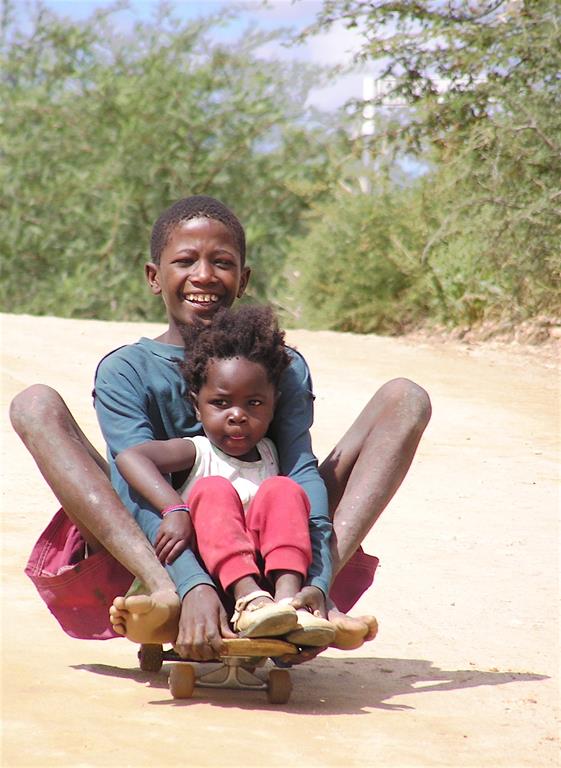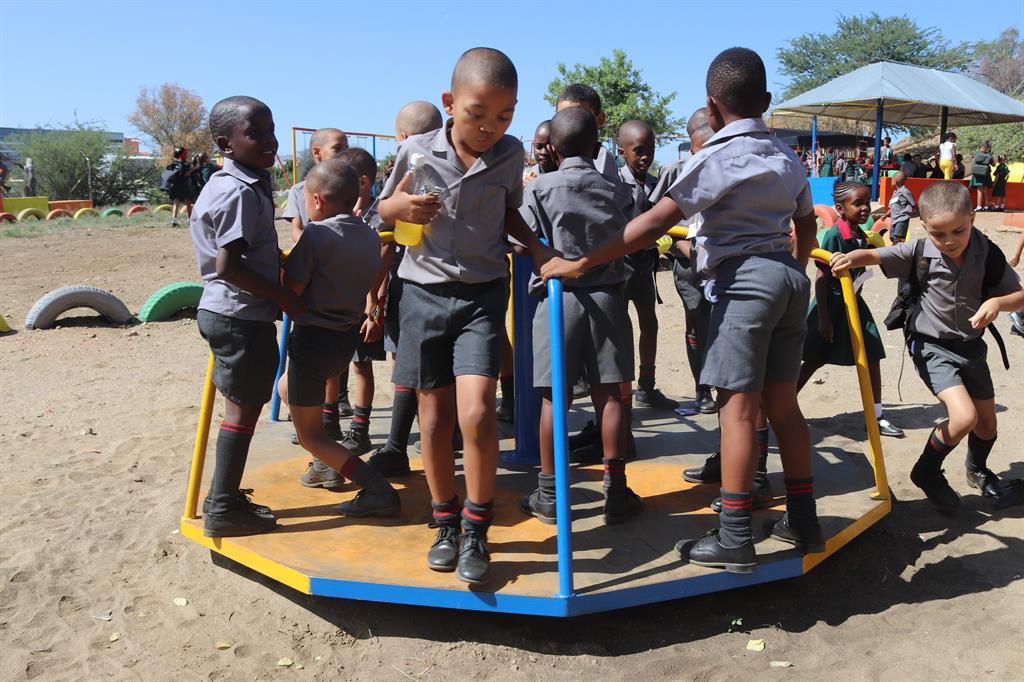Mobile with a smile
Keeping your kids moving and active will have great overall benefits for their health.
Sharnay Botha
Children are naturally physically active and love to move around. Keeping them busy at home can be challenging, but burning off energy and staying active is crucial for their overall well-being. During early childhood, children grow and develop rapidly and quickly pick up new skills and habits. Parents can help teach a love of physical activity to their children. Doing so can set healthy patterns that will last into adulthood.
Over the last few years, it has become evident that children are becoming increasingly inactive. Due to children’s busy school schedules, lack of safe opportunities to exercise and increased time spent in front of screens like cell-phones, children spend less time being active. This has various physical and psychological effects. Some of these include an increased chance of being overweight, weaker muscles and bones, mood swings and anxiety. This has a negative influence on their self-esteem and academic performance.
Keeping children fit and active can do wonders for their overall health. There are many benefits of daily exercise for children. Your child won’t just notice the benefits and changes, but you will too.
Psychological benefits
Increases self-esteem
Improves confidence
Reduces stress and anxiety
Helps keep their mental state of mind healthy
Improves sleep
Physical benefits
Helps strengthen bones and muscles
Reduces the risk of obesity
Lower blood pressure and blood cholesterol levels
Improves sport skills and overall fitness
Increases energy levels
Improves balance, flexibility, coordination and strength.
Academic benefits
Improved concentration and attention in class
Increased flow of oxygen to the brain assists the ability to focus and learn
Improved memory
Social benefits
Provides opportunities to develop social skills and make friends.
Learn leadership skills
Learn teamwork skills.
Recommended physical activity
Young children should have opportunities to participate in a range of developmentally-appropriate, play-based activities and engage in quality sedentary time. The World Health Organisation provides guidelines for children of different ages, stating the recommended time they should spend being active as well as recommended time spent sedentary in front of any screen (cell-phone, TV or computer). These recommendations can be spread throughout the day.
• Children younger than one-year-old:
o 30 minutes of physical activity per day
o Limited or no screen time
• Children one to two years old:
o 180 minutes of moderate-to-vigorous intensity physical activity per day
o Less than 60 minutes of sedentary screen time per day
• Children three to four years old:
o Spend at least 180 minutes in a variety of types of physical activities at any intensity, of which at least 60 minutes is moderate- to vigorous intensity
o Less than 60 minutes of sedentary screen time per day
• Children five years and older:
o 60 minutes of moderate - to vigorous-intensity physical activity daily
o Vigorous-intensity activities should be incorporated, including those that strengthen muscles and bones, at least three times per week
o Maximum of two hours of screen time per day.
Parents play a key role in helping their children become more physically active. The best way to encourage your child to be more active is to lead by example and instil a habit of exercise in them. Create opportunities for them to move and play freely and make time to exercise with them. The most important is to make it fun. This will teach your child that exercise is enjoyable.
For ideas and tips to get your child moving, have a look at the next page!
Children are naturally physically active and love to move around. Keeping them busy at home can be challenging, but burning off energy and staying active is crucial for their overall well-being. During early childhood, children grow and develop rapidly and quickly pick up new skills and habits. Parents can help teach a love of physical activity to their children. Doing so can set healthy patterns that will last into adulthood.
Over the last few years, it has become evident that children are becoming increasingly inactive. Due to children’s busy school schedules, lack of safe opportunities to exercise and increased time spent in front of screens like cell-phones, children spend less time being active. This has various physical and psychological effects. Some of these include an increased chance of being overweight, weaker muscles and bones, mood swings and anxiety. This has a negative influence on their self-esteem and academic performance.
Keeping children fit and active can do wonders for their overall health. There are many benefits of daily exercise for children. Your child won’t just notice the benefits and changes, but you will too.
Psychological benefits
Increases self-esteem
Improves confidence
Reduces stress and anxiety
Helps keep their mental state of mind healthy
Improves sleep
Physical benefits
Helps strengthen bones and muscles
Reduces the risk of obesity
Lower blood pressure and blood cholesterol levels
Improves sport skills and overall fitness
Increases energy levels
Improves balance, flexibility, coordination and strength.
Academic benefits
Improved concentration and attention in class
Increased flow of oxygen to the brain assists the ability to focus and learn
Improved memory
Social benefits
Provides opportunities to develop social skills and make friends.
Learn leadership skills
Learn teamwork skills.
Recommended physical activity
Young children should have opportunities to participate in a range of developmentally-appropriate, play-based activities and engage in quality sedentary time. The World Health Organisation provides guidelines for children of different ages, stating the recommended time they should spend being active as well as recommended time spent sedentary in front of any screen (cell-phone, TV or computer). These recommendations can be spread throughout the day.
• Children younger than one-year-old:
o 30 minutes of physical activity per day
o Limited or no screen time
• Children one to two years old:
o 180 minutes of moderate-to-vigorous intensity physical activity per day
o Less than 60 minutes of sedentary screen time per day
• Children three to four years old:
o Spend at least 180 minutes in a variety of types of physical activities at any intensity, of which at least 60 minutes is moderate- to vigorous intensity
o Less than 60 minutes of sedentary screen time per day
• Children five years and older:
o 60 minutes of moderate - to vigorous-intensity physical activity daily
o Vigorous-intensity activities should be incorporated, including those that strengthen muscles and bones, at least three times per week
o Maximum of two hours of screen time per day.
Parents play a key role in helping their children become more physically active. The best way to encourage your child to be more active is to lead by example and instil a habit of exercise in them. Create opportunities for them to move and play freely and make time to exercise with them. The most important is to make it fun. This will teach your child that exercise is enjoyable.
For ideas and tips to get your child moving, have a look at the next page!










Kommentaar
Republikein
Geen kommentaar is op hierdie artikel gelaat nie